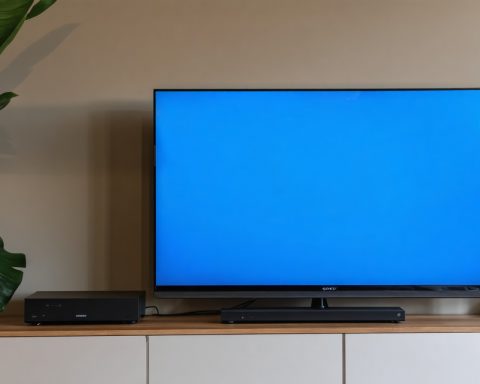Meta is set to make waves in the wearable tech industry with a significant upgrade to its Ray-Ban Smart Glasses. In direct competition with Samsung’s anticipated AR glasses, Meta plans to incorporate a display into their next-generation eyewear, a move that promises to revolutionize user interaction.
Ahead of the Game
Currently, Meta’s Ray-Ban Smart Glasses rely on voice commands and gestures, as they lack an integrated display. However, according to a recent Financial Times report, Meta is poised to change this by equipping its upcoming model with a display that could be ready by the second half of 2025.
Projecting the Future
Meta had previously demoed a prototype, internally dubbed ‘Project Orion,’ equipped with advanced display technology that projects information directly into the user’s field of vision. Although the initial tech was too costly for immediate release, it appears Meta is working on a more affordable version of this innovative display for the market.
The Market Race
With Samsung unveiling its first XR headset, known as ‘Project Moohan’, and showcasing Android XR, the competition in the AR and XR sectors is intensifying. As giants like Apple and Samsung throw their hats in the ring, the coming years will see a heated contest to lead the wearable tech market.
Which tech titan will dominate and set new standards? Only time will tell, but the future looks undoubtedly exciting for AR enthusiasts.
Meta’s Bold Leap: Revolutionizing Wearable Tech with Smart Glasses Innovation
Meta is strategically positioning itself at the forefront of the wearable tech industry with an exciting development: the introduction of a display in its new Ray-Ban Smart Glasses. This move not only aims to enhance user interaction but also promises to redefine how augmented reality (AR) is experienced in everyday life.
Key Features of Meta’s Latest Ray-Ban Smart Glasses
Up until now, Meta’s Ray-Ban Smart Glasses have utilized voice commands and gestures due to their lack of an integrated display. The forthcoming version aims to address this limitation, bringing forth an enriched interface that projects digital information directly into the wearer’s field of vision. This feature is expected to be available by the latter half of 2025.
Innovative Display Technology
Previously, Meta teased a groundbreaking prototype under the codename ‘Project Orion,’ utilizing advanced display technology. Despite the initial prototypes being prohibitively expensive, Meta’s recent efforts suggest that such cutting-edge technology will soon be accessible at a consumer-friendly price point. This step could prove pivotal in making AR experiences mainstream.
Market Dynamics and Competition
Meta’s advancements coincide with other tech giants venturing deeper into augmented and extended reality (XR). Samsung, for instance, is making strides with its ‘Project Moohan’ XR headset and leveraging Android XR capabilities. The intensifying race among industry leaders such as Apple, Samsung, and Meta signals an impending evolution in wearable tech.
Predictions and Insights
The introduction of displays in smart eyewear is anticipated to significantly alter the dynamics of the AR market. As companies push the envelope on innovation and affordability, this rivalry is likely to yield products that are increasingly sophisticated yet consumer-friendly. For AR enthusiasts, the coming era promises to be a thrilling journey marked by technology that seamlessly integrates into daily life.
Security and Sustainability Considerations
As with any new technology, the emphasis on security and sustainability remains paramount. Users should remain informed about data privacy legislation and eco-friendly practices adopted by manufacturers to ensure an ethically responsible consumption of tech gadgets.
The question of which company will eventually dominate this rapidly evolving market remains open, yet the advancements herald an exciting future for wearable technology enthusiasts and innovators. For more updates on Meta’s plans and innovations, visit the official Meta website.







